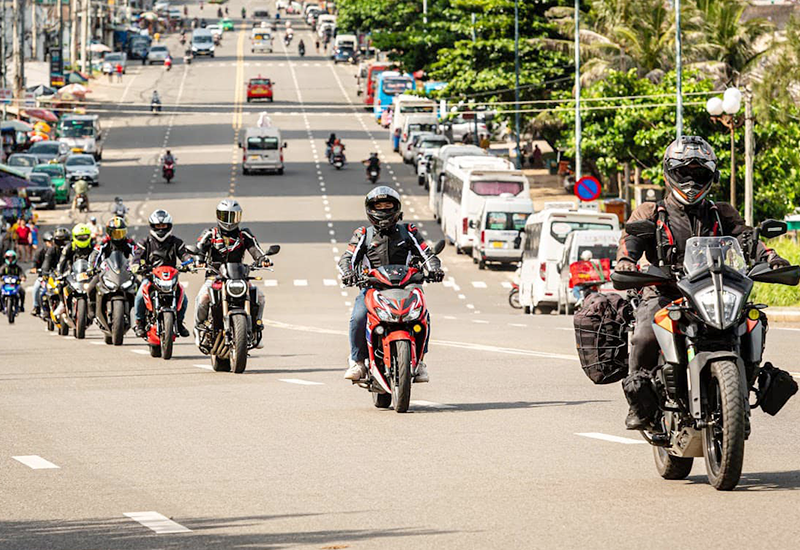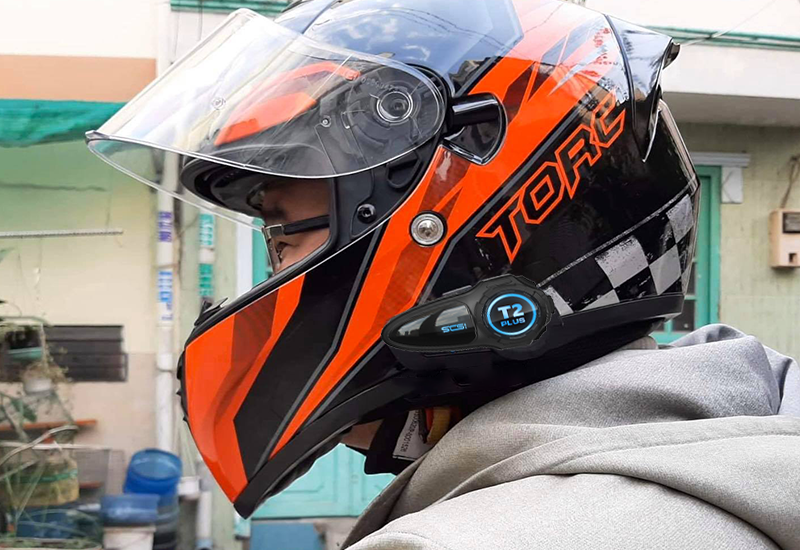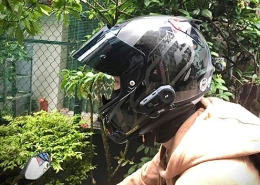The Correct Way To Open Bluetooth Intercom Hands-free Call —— Clearer, Safer Riding Communication
Have you had this experience?
You were driving a motorcycle and the scenery was beautiful. You say, “Brother, I want to take a photo in front”, but a sentence comes from you partner’s headphones:
“…what? Repeat it? What say again?”
Now, you are not riding, but racing against the wind and fighting headphones!
Don’t worry—it’s not that your ears are not working properly. You may just be opening the intercom in a bad way.
Let’s talk about the correct way to open the hands-free calling feature of a motorcycle Bluetooth intercom so that you can “speak clearly, hear clearly, and not yell” all the way.
1. The microphone position is the key to the “hands-free call”!
When a motorcycle rider rides, the intercom needs to “scream” it, but, no matter how loud you shout, the other party may not be able to hear it. Instead, it will easily cause noise and bursts, which will be counterproductive.
The hands-free call of motorcycle Bluetooth intercom, the microphone is placed correctly, and the noise reduction feature is equipped to minimize wind noise, breathing and other interference, ensuring your voice is picked up, which is essential for safe riding or activity.
Microphone placement tips:
-
- Distance of 2.5 cm (1 inch)
The microphone element is about 2.5 cm (1 inch) away from the corner of the mouth, but the microphone does not contact your mouth directly. - 45° angle Point to your mouth
Ensure the front of the microphone (usually marked as marks) faces your mouth at a 45° angle. This angle can effectively prevent the breathing airflow from directly hitting the microphone, causing a “whim” sound while achieving the best voice capture effect. - Testing and tuning
Try different mounting positions when wearing the helmet to determine which installation position is best for your helmet and microphone type. - Secure wires and cables
Slot excess microphone cables under the helmet tent and pads to prevent tangles or discomfort. - Consider using tape:
A small piece of tape can hold wires that are difficult to tangle in place.
- Distance of 2.5 cm (1 inch)
On the contrary, if the microphone is too far away from the mouth, downward or stuck on both sides of the cheeks, it is easy to have loud and small sounds, missing words and sentences.
It is recommended to adjust the microphone position before wearing a helmet and conduct tests:
Before you start riding, test the microphone and audio settings in a quiet environment to ensure everything works.
Before putting on the helmet, take the time to correctly locate and fix the microphone and you will get a better communication or recording experience and improve sound quality and comfort.

2. Noise reduction relies on technology, don’t ignore the wearing details!
You may wonder: “I’m wearing a walkie-talkie, why does the other party still hear a ‘woosh’ sound of wind?” The problem is not the motorcycle headset itself, but that you ignore the wearing details and the coordination with the environment.
The motorcycle riding environment has strong wind noise and engine vibration. No matter how smart the Bluetooth helmet intercom is, don’t ignore the wearing details
✔ Make sure your motorcycle helmet Bluetooth headset supports CVC digital noise reduction, which is the “noise reduction artifact” in Bluetooth headsets. It can automatically reduce environmental noise and restore the original voice.
✔ The microphone must be facing the mouth to avoid being blocked by the edge of the goggles or under the helmet padding. When riding too fast, it is recommended to adjust the microphone inward and add a windproof cotton cover to reduce the interference of high-speed airflow on the call quality.
✔ The helmet intercom is not just for you to wear it, it is more like an “on-board audio engineer”. Only with correct cooperation can the noise reduction technology play its due strength!
3. Don’t turn up the volume to the maximum
Many motorcycle riders subconsciously turn up the volume to 100% as soon as they put on their headphones, as if they want to “shock the whole audience” on the road. But do you know? Too much volume not only hurts your ears, but also quietly “empties” the life of your headphones!
Long-term high-volume output is easily caused by hearing fatigue and produces a “buzzing” tinnitus. More importantly, it will accelerate the aging of the speaker diaphragm inside the Bluetooth intercom and distort the sound quality.
-
- The correct way is:
In general riding environments, it is most comfortable to control the volume at 60~70%, which can not only hear the voice commands clearly, but also will not cause auditory pressure.
- The correct way is:
More and more intercom devices support HiFi stereo music playback. If you also like to listen to music while riding, remember to check whether the Bluetooth helmet intercom supports independent adjustment of the intercom volume and the music volume, so that you can have a clear conversation while enjoying the music, without having to repeatedly pull between “not being able to hear clearly” and “too noisy”.
Be kinder to your ears and your equipment—your motorcycle intercom will thank you for your gentle tuning!
4. Low battery?
When the battery is low, the headset is prone to delay, noise, and disconnection. Charging in advance is the best way.
Here is a guide to maintaining the battery of motorcycle Bluetooth headsets:
-
- Motorcycle Bluetooth headsets should use original cables and data cables, with stable current, accurate matching, and not easy to heat up or damage the battery, extending the battery life
- When charging, place it in a cool and ventilated place. Do not leave the headset on the motorcycle seat cushion exposed to the sun for a long time. The high temperature of the battery will expand and accelerate aging
- Check whether the headset is fully charged before going out. Generally, it takes more than 2.5 hours to charge.
- If you leave the headset unused for a long time, charge it when you need it. Doing so for a long time will cause battery damage. You can charge the motorcycle headsets when the daily battery power is less than 20%. The battery is healthiest at “80%-90%”. You don’t need to charge it to 100%, let alone charge it all night.

5. When multiple people are talking, don’t rush to “interrupt”!
When riding with multiple people, the most feared thing is not disconnection, but “you say one sentence, I say one sentence, everyone interrupts”, and no one hears the key points clearly. To achieve truly orderly and clear team intercom communication, using the correct intercom mode is very important!
Take the T2 PLUS motorcycle Bluetooth intercom as an example. It supports up to 8 people to talk in a team at the same time, and has a connection distance of up to 1,000 meters, without fear of falling behind or losing sound. The team leader can set priority speaking rights and ensure that every rider can express in an orderly manner through polling calls, without frequent interruptions
And the most considerate design is-support for voice control! Just one wake-up command can complete answering, hanging up or switching channels, without manual operation, and safer driving. Especially on high-speed or complex roads, voice control can effectively avoid safety hazards caused by distracted operations.
Team riding relies on tacit understanding and good Bluetooth motorcycle communication system cooperation. T2 PLUS makes intercom orderly and speaking more “advanced”.
6. Safe calls are truly hands-free
Motorcycle Bluetooth intercoms are not shouting machines, but your smart voice co-pilot. Master the correct hands-free calling method, and your riding communication will be smoother, clearer, and more worry-free.
Final tips:
Update the firmware regularly to get better call algorithms
Manage the device with the App for more intuitive adjustments
Try to practice with your teammates a few times to find the wearing position and volume that suits you best







